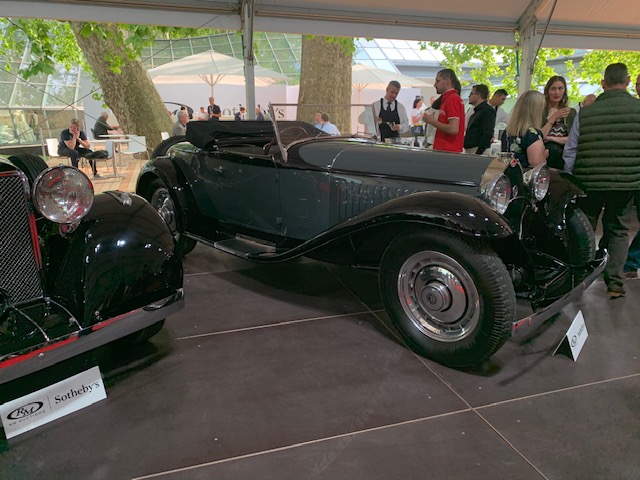1931 Bugatti Type 54 Grand Prix

The descriptions of the Classic Cars in the Directory were partly generated or supplemented with the help of artificial intelligence (AI). The content may occasionally not always be entirely accurate or factually correct despite careful checking.
The Bugatti Type 54 Grand Prix first appeared in 1931 and was designed to be the ultimate racing car of its era. Its technical details were ahead of its time and it remains a true masterpiece of automotive engineering. This car was built with speed in mind and incorporated advanced aerodynamics and innovative design concepts to create a remarkable driving experience.
The car was powered by a 4.9-liter straight-eight engine that was capable of producing an impressive 300 horsepower. This engine featured twin overhead camshafts and dry-sump lubrication, which helped to reduce the engine's weight while increasing its power output. Additionally, the engine was equipped with a supercharger, allowing it to develop a top speed of over 200 kilometers per hour (124 mph).
Not only was the engine powerful, but the transmission was also state-of-the-art. The Bugatti Type 54 was equipped with a four-speed manual gearbox that was synchronized, which allowed for smooth and responsive gear changes. The car also featured hydraulic brakes on all four wheels, which ensured that the car could be slowed down effectively at high speeds.
The car's bodywork was designed with aerodynamics in mind, and featured a sleek, streamlined shape that helped to reduce drag and improve handling. The Type 54 also had a unique suspension system that allowed the wheels to move independently of each other, which gave the car a smooth ride and agile handling.
Another notable feature of the Bugatti Type 54 Grand Prix was its lightweight construction. The chassis was constructed from tubular steel, which reduced weight without sacrificing strength. The bodywork was also made from lightweight materials, such as aluminum and magnesium, which helped to reduce the car's overall weight and improve its performance.
In its day, the Bugatti Type 54 was a true marvel of automotive engineering, incorporating advanced technology and innovative design concepts in every aspect of its construction. It remains a highly desirable car today and represents one of the pinnacle achievements of the Bugatti brand.
Milestones
- Introduction of Bugatti Type 54 at the Paris Motor Show in 1931 - Designed by Ettore Bugatti as a successor to Type 35 - Equipped with a 4.9-liter eight-cylinder engine producing 300 hp - Featured a high-performance chassis with a fully independent suspension system - Limited production of only 4 units due to the Great Depression and lack of demand - Debuted at the Monaco Grand Prix in 1931, driven by Achille Varzi and Louis Chiron - Won its first race at the 1931 Tripoli Grand Prix, driven by Varzi - Won several other races in Europe, including the French Grand Prix and Belgian Grand Prix in 1931 - Retired from racing after 1931 due to financial issues and lack of demand for Grand Prix racing - Remained a popular collector's item and inspiration for future Bugatti models.Technical
- Engine: 4.9-liter DOHC inline-eight - Horsepower: 300 at 5,500 rpm - Transmission: Four-speed manual with Wilson preselector gearbox - Top speed: Over 150 mph - Suspension: Independent front with semi-elliptic springs, live rear axle with reversed quarter-elliptic springs - Brakes: Drums all around, hydraulic at the front - Wheelbase: 2,900 mm (114 in) - Weight: 700 kg (1,540 lb) - Steering: Worm and nut - Fuel system: Twin Zenith carburetors - Ignition system: Dual magnetos - Fuel tank capacity: 185 liters (49 gallons)